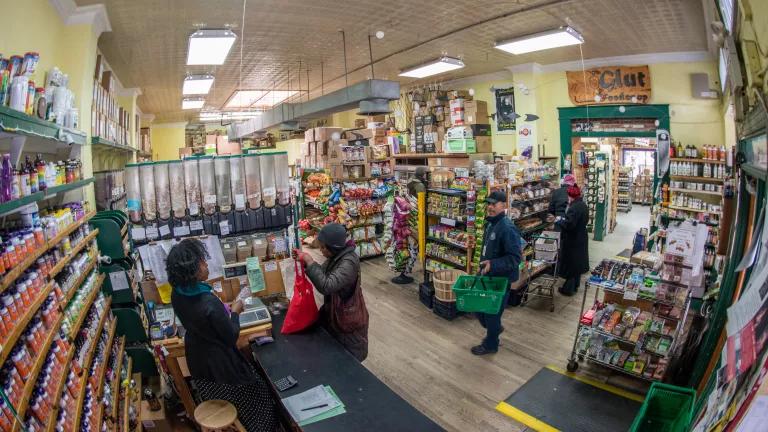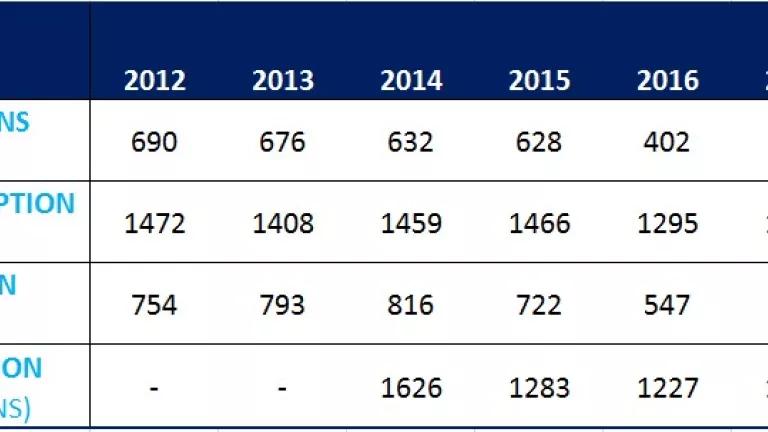Nature Thrives with Diversity; California's Food Systems Can, Too
Our decisionmakers need to think long-term and tie economic recovery with support for our small- and mid-sized farmers, our essential workers, and climate-smart agriculture programs.

Glut Employee Searching through Coop Inventory
We’ve seen the effects of COVID-19 on our food system: Loss of markets, food waste, growing food insecurity, and infrastructure and supply chains not designed to quickly accommodate changing markets and consumer demands. While stimulus checks temporarily alleviated some financial stresses for families and small businesses, the Trump Administration failed to provide equitable relief to our small and mid-sized farmers and ranchers. As California thinks about how to rebuild, our decision makers need to think long-term and tie economic recovery with support for our small and mid-sized farmers, our essential workers, and well-established climate-smart agriculture programs. Legislators and the Administration must incentivize diverse farming systems and build food systems infrastructure that can withstand future public health, climate, and market threats. Why?
More diverse farming operations are resilient because they embrace diversity. George Washington Carver, pioneer of the sustainable agriculture movement, understood this and led by example in the South. What does diversification look like in practice now? The regenerative and organic farmers and ranchers I know grow a variety of crops, they find ways to add value to what they grow (e.g. meat into jerky, herbs into jams, milk into soaps, nuts into oils), they run more than one business enterprise on their farm or ranch (e.g. farm stays, farm tours, hosting cooking classes, operating a licensed commercial kitchen, incorporating livestock into their crop fields), and they sell into a variety of markets (e.g. schools, direct-to-consumer, restaurants, private companies). This level of diversification strengthens their enterprises and makes them more resilient to external shocks.
Ecosystems thrive by embracing diversity, and our food system should follow suit. Unfortunately, inaccessible infrastructure, monopolized agricultural companies, and farmland consolidation abound. So, in May, a coalition of organizations in California, including NRDC, sent a letter to the California Governor, legislators, and the Business and Economic Recovery Task Force urging them to tackle the dual crises of climate change and economic downturns by tying economic recovery to investments in resilient and diverse food systems infrastructure. Specifically, we asked them to:
- Build the infrastructure and markets needed to support regional food and farming systems (e.g. processors, slaughterhouses, food distribution facilities, food hubs, public procurement, etc.);
- Protect our essential food system workers; and
- Incentivize on-farm practices that build soil health, diversify cropping and livestock systems, and reduce the use of synthetic inputs.

Diverse Farm's Produce at Farmers Market
Policy makers need shift the pendulum of economic investment towards food systems diversification. Too many Californians are food insecure; too many Californians bear the burden of agricultural pollution; too many Californians are out of a job; and too many of our state’s farmworkers work in conditions that are detrimental to their health. Investing in diverse food and farming systems can increase access to fresh, nutritious food; create jobs in the food and agricultural sector; can grow rural wealth; and reduce the use of dangerous inputs and pesticides that frequently pollute socially disadvantaged communities.

Glut Collective Member Working the Register
Two farmers shared salient thoughts with me that I want to leave with you. One said, “Diversity gives me stability,” and another shared that she, “Wakes up every day thinking about a food system centered on soil health.” I want politicians to embrace these two philosophies. As Sacramento decision-makers contemplate next year’s legislative agenda, we here at NRDC will continue making the case for why economic stimulus cannot ignore improvements to our food systems infrastructure. California needs the jobs, rural economic growth, climate resiliency, and public health improvements that food systems diversification can provide.


